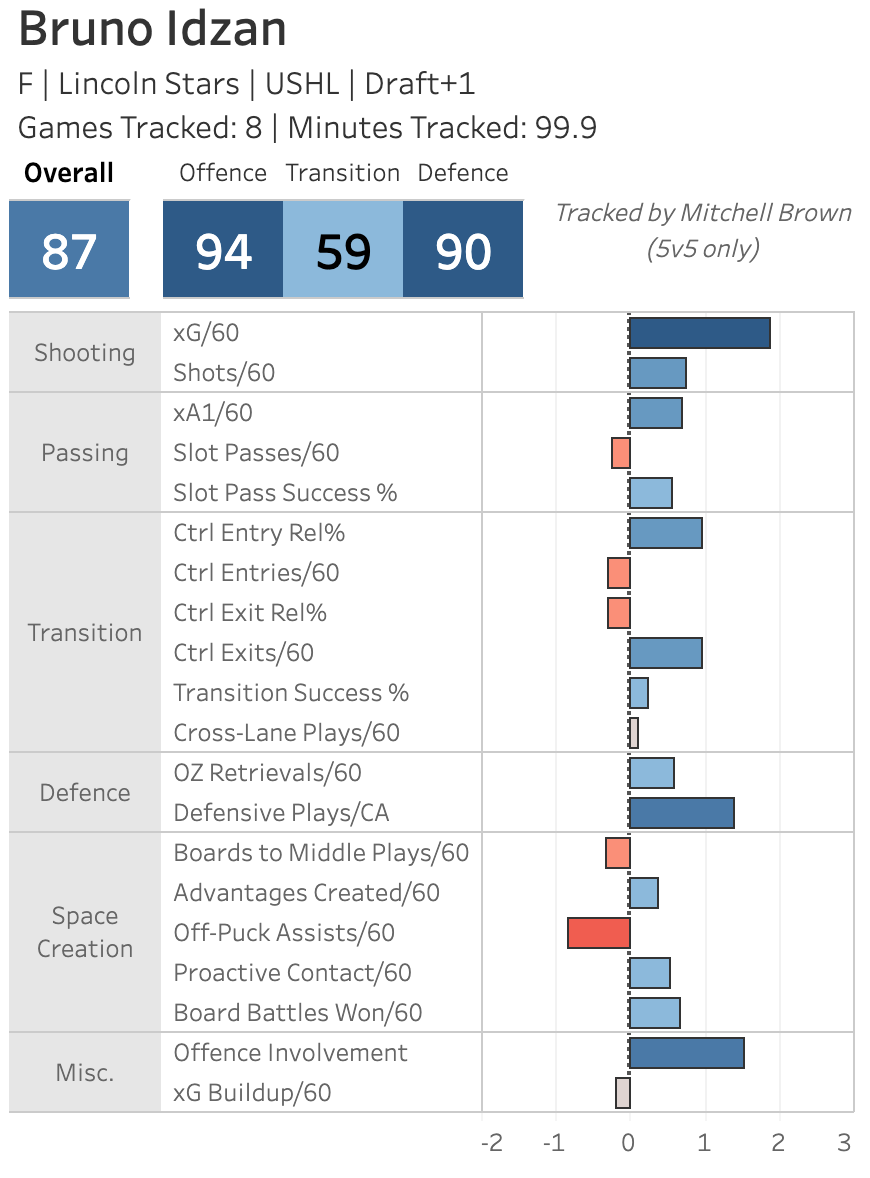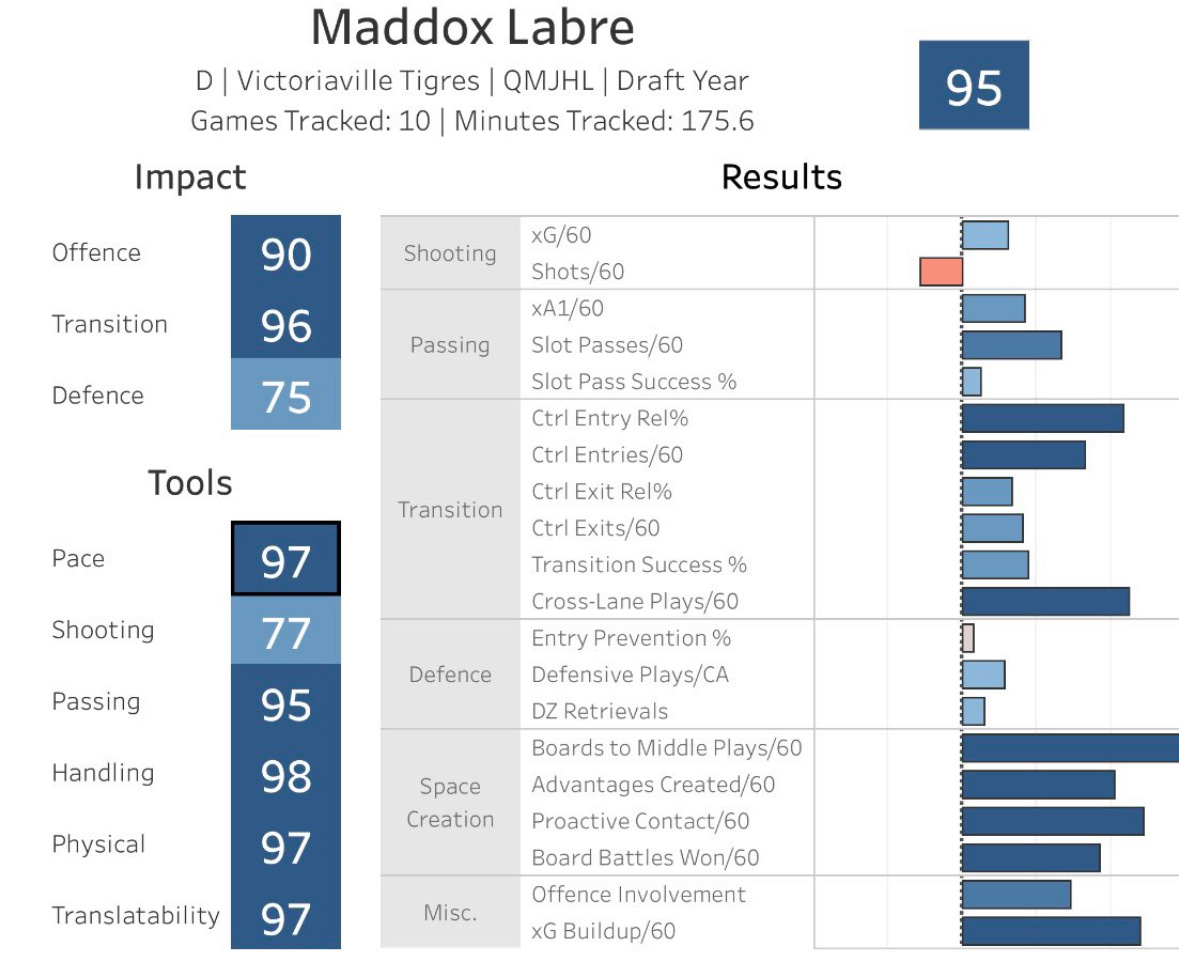Three Draft Targets at 114th Overall for the New Jersey Devils
With the second of their fourth-round picks, the Devils would be wise to target these three players.
Four-ish weeks ago, I started my many-part series deep-diving potential draft day fits for the Devils at all rounds of the draft — from the Devils’ two second-rounders (~50th and ~64th) to their sixth-rounders, I’m compiling a list of players I’d be pounding the table for on draft day should they be available. Naturally, I’ve focused more on the earlier stages of the draft, as that is where there is the most talent and intrigue. However, I do have my list of scouting reports and notes for players I think will be available come the end of the draft, too, which I am excited to share with you.
Targets so far:
50th Overall (Rd. 2): Adam Benák, Alexander Zharovsky, Ethan Czata, Conrad Fondrk, Cameron Schmidt
63rd Overall (Rd. 2): Theo Stockselius, LJ Mooney, Tomáš Pobežal, Filip Ekberg
90th Overall (Rd. 3): Philippe Veilleux, Mateo Nobert, Maxim Agafanov
99th Overall (Rd. 4): Aidan Lane, Max Westergård, Drew Schock
114th Overall (Rd. 4):
161st Overall (Rd. 6):
178th Overall (Rd. 6):
To support me, all I ask is that you press the “Subscribe” button if you haven’t already. This is a completely free-of-charge blog with the sole intention of reaching as wide an audience as I can, hoping to share my opinions with as many as possible. By pressing the button below, you’ll be sent the articles I post on a daily basis through your email, but the real help you’ll be giving me is in putting my name out there more in the Substack algorithm. If you want to go a step further, consider sharing this publication with your friends, family, and every Devils fan you know. It means a ton — thank you!
The New Jersey Devils own two fourth-round draft picks in the 2025 NHL Entry Draft after acquiring the 99th overall selection for veteran Erik Haula. I profiled three potential fits for that pick yesterday, and now it’s time to jump right in to the second of their fourth-round picks: 114th overall.
Bruno Idžan (LW)
Bruno Idžan burst onto the scene a bit this past season after jumping from dominating the Croatian AlpsHL to playing in the USHL for the Lincoln Stars. Now committed to the University of Wisconsin, the overager has reportedly drawn some NHL interest.
Idžan’s standout quality is his already-NHL-caliber shot. He can beat goaltenders clean from any distance, any angle, and with any shot type. His wrister is pinpoint-accurate, deceptive, and is able to be put on net without him having to corral the puck for too long. His one-timer is heavy, tightly wound, and unchoreographed. I’ve been impressed with his backhand and snap shots, too. From distance, from in-tight, from parallel to the goal line, Idžan’s shot is legit.
His shot is all the more threatening by virtue of his ability to seemingly always be in free space. Idžan’s feel for the flow of play when operating off-puck is with the mentality of a true sniper, sneaking into open, high-danger ice unnoticed before hammering a shot on target.
Another standout quality of Idžan’s is his physical edge, something you would expect from a stockily built player in the USHL. At 6’1, 195 pounds, he is engaged on the forecheck, knocking pucks loose when hounding the puck-carrying defender. He plays in corners and along the walls well. In no way does he shy away from a physical battle.
A major concern is his skating. Idžan is neither fast nor explosive nor particularly poised on his edges. He makes up for it somewhat with intelligent routes to the puck, though even then, he sometimes cannot catch up to the play. I would be ecstatic to hear if he worked with a skating coach who could teach him to deepen his stride. This lack of skating ability, when in combination with his generally middling puckhandling skills, makes him largely unthreatening as a playdriver. As a complementary piece, though, there are few players in the draft more tantalizing from a pure skill perspective.
Between his shot, penchant for finding space, and physicality, there is legit NHL upside with Idžan. To me, he profiles as a smaller Anthony Mantha with third-line upside, if he can improve his skating while maintaining what makes him a threat already.
*The video above is via the Lincoln Stars.
Viggo Nordlund (LW)
If you’ve been keeping up with this series, it’s no surprise at all to see yet another diminutive forward make an appearance. Viggo Nordlund, at 5’9, 167 pounds, is the stereotypical JP pick — highly skilled with some game-breaking ability, but will likely fall well past where his talents should place him by virtue of his frame.
Some outlets have Nordlund ranked significantly higher than 114th overall — The Hockey News’s Tony Ferrari has him ranked 55th, and Recruit Scouting and SMAHT Scouting both have him ranked in the early-mid 80s. At the same time, some outlets have put him in the late stages of the draft, ranked anywhere from 150 to 250. In my personal ranking, I’d have Nordlund ranked significantly higher than 114th — his talent is that tantalizing.
Beginning with his skating, Nordlund boasts high-end marks all around as one of the select few skaters who can take over a game with his legs alone. His top speed is electric, he is able to outskate just about anyone at his level, and is above-average for NHL standards, too. The explosiveness is phenomenal, with F1-car-like abilities to stop and start movements. His edgework is what you would expect from a highly skilled player this small.
Nordlund’s hands and playmaking chops are top tier, too, besting defenders 1-on-1, 1-on-2, and sometimes even 1-on-3 at the J20 level. He can wriggle out of tough spots, using his slight stature as an asset when in conjunction with his elite hands and elite skating. From a facilitation perspective, Nordlund is one of the most creative and exciting prospects available, doling out high-difficulty, high-danger passes on a shift-to-shift basis. He is prophetic with his reads, finding plays that were assumed nonexistent.
His point totals in the J20 — 24 goals and 25 assists in 40 games — may lead you to believe that Nordlund is a true dual-threat, but the reality is that his facilitation abilities are stronger than his shot. That isn’t to say that his shot isn’t good; he can beat goalies at distance with a deceptive release to be sure, but the strength of his game lies mostly in playmaking.
His issues lie obviously in his size and with consistency. Nordlund is not a physical player by any means. When on the forecheck, he opts for an approach more similar to Jack Hughes than Jesper Bratt, generally adhering to using stick checks and smart positioning to regain possession of the puck rather than pinballing around the offensive zone.
From a consistency standpoint, Nordlund has a tendency to, at times, overdo things. He can be wildly selfish, doing “too much” and sacrificing the quality of his play as a result. He operates best in a symbiotic way, where his game elevates with the inclusion of his teammates and vice versa. I’m not overwhelmingly concerned with this from a long-term perspective, as he did figure it out over the course of the J20 year and into his stint in the SHL, but it is worth noting.
If the draft were based on talent and upside, Nordlund would be at the top of everyone’s boards. There’s obviously more nuance to it than that, though. He is one of the true boom-or-bust prospects in this year’s draft; in my head, he either caps out having never touched NHL ice or being a truly dynamic, top-six, first power-play winger. There is no in between. Players like this — pure upside swings — are the guys teams should be itching to select in the middle rounds of the draft.
*The video above is from the SHL.
Maddox Labre (LHD)
From a statistical standpoint, Maddox Labre would seemingly be a rancid pick at this spot in the draft — operating as his team’s 1D, Labre managed just 19 points in 61 QMJHL games. His team, though, the Victoriaville Tigres, was comically bad, sporting a record of 17-43-4 and a goal differential of -149.
With that said, Labre might actually fly under the radar as a player in the 2025 NHL Entry Draft, despite having legitimate NHL tools, because of his lowly production.
Labre’s calling cards are deception and transition. Starting with the former, the subtleties within his game lend themselves to NHL play. Much like the Devils’ own Simon Nemec, Labre relies on minuscule details and intricacies to deceive the opposition and inherently push the puck up-ice at all times. Crafty little uses of edgework, no-look plays, bank passes, clever head and body fakes, and a willingness to include himself in the play make him exceptionally deceptive and effective at playdriving and providing himself and his teammates with offensive opportunities.
Labre has strong legs, generating oodles of power within each stride of his deep stance. He enjoys having the puck on his stick in transition; perhaps this is because of his inherent playstyle, or perhaps he was smart enough to recognize that his team was generally talentless and decided to employ a do-it-yourself mentality. Either way, Labre excelled being the head of transition for the Tigres defense corps with great poise and success. Give-and-goes through the neutral zone are commonplace when he is on the ice.
While established in the offensive zone, I was consistently impressed with Labre’s ability to find high-danger plays, particularly when engaged down low. As I mentioned earlier, he is no stranger to jumping into the play, putting himself in board battles when activating, and almost always coming out with the puck. He creates from the perimeter, sometimes cutting to the interior of the offensive zone in order to draw defensive attention before passing it to a teammate in now-freed-up ice.
Defensively, there is a lot to like about Labre’s game, too. His smooth skating lends itself well to minimizing gaps when covering 1-on-1. He is physical, unshy of laying open-ice hits when called for and punishing netfront presences at will. Most impressive, to me, was his ability to generally keep the puck away from the slot in his own end.
Take a look at his tracked microstats from Mitch Brown to see just how effective he is in both zones:
While Labre’s statistical profile is unimpressive, the tools are genuinely captivating, and there is legit NHL upside to be had with him. I think the tools are there to become a mainstay bottom-four defender with two-way, puck-moving skill, something that just about every NHL organization needs.
If it were up to me, I would run with the Nordlund pick. The upside of a top-six contributor is just too thrilling to ignore. Beyond him, I’m equally high on both Labre and Idžan, so it’s a true coin flip in my mind.
Tune in tomorrow for three prospects the Devils should target with 161st overall!








Do the Devils employ skating coaches? For which levels? Can the Devils send guys to their skating coach if they draft a player but he does not sign with them yet? I mean, I cant think of a player the Devils have who I would consider a great skater. Jack for all high explosiveness, falls down a lot all by himself. Certainly every player can get better at it even if they are above average skaters